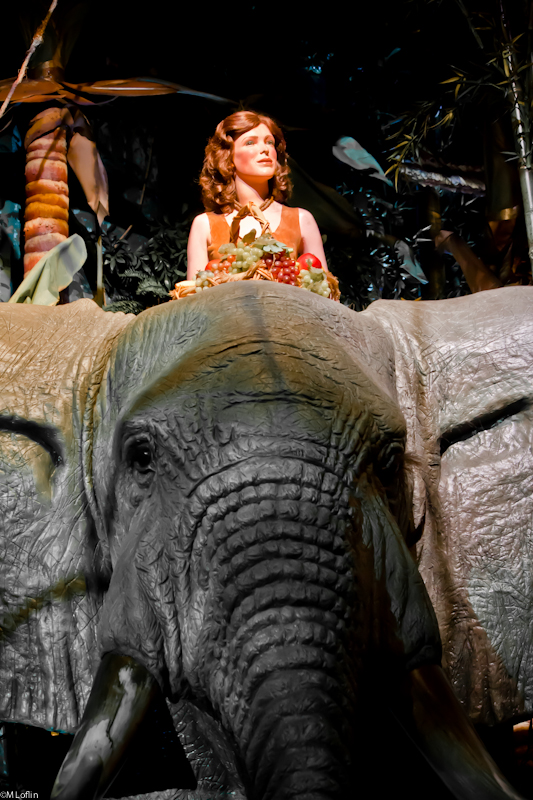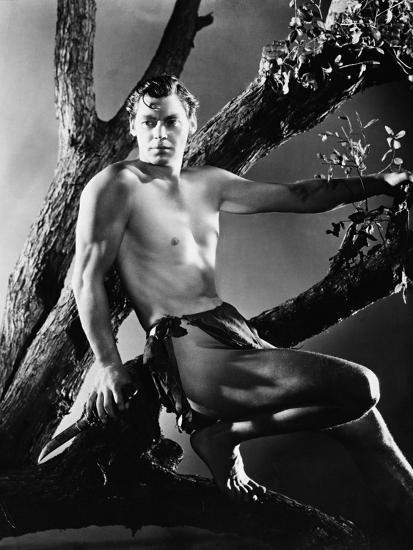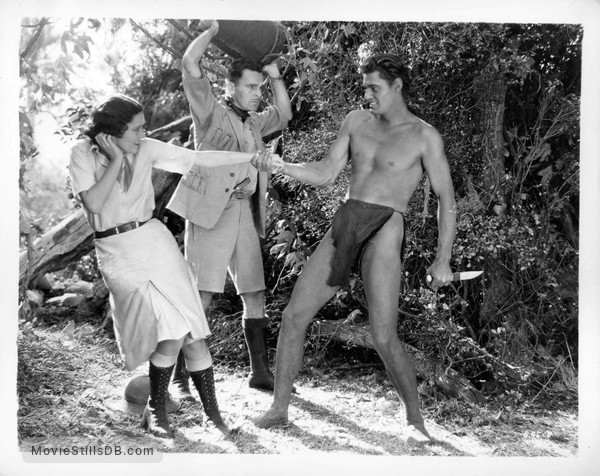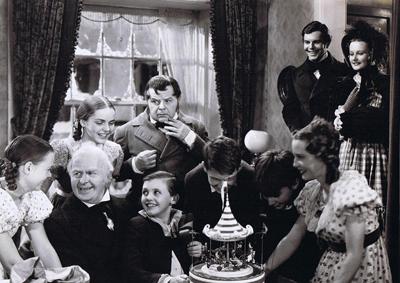Usually I just end the year with a review of "A
Christmas Carol", but this year marks something special upon my years of
critiquing films and TV programs. This is my tenth anniversary! I know I have
had this blog for eight years, but my blog isn't the focus. For ten long years
since I was a freshman in High School, I found a way to devote my love and
passion for film by writing reviews and discussing a bit about its history
through my Facebook to eventually running my own blog. I didn't think at first
I would commit to this for so long, but I have and am still making time to
write reviews through my busy schedule, regardless how the number of reviews I
write each year have decreased. The problem is I don't remember the exact date
when I started writing reviews (my reviews on Facebook have been deleted and
moved to this blog). I remember it happening in the Middle of my freshman year,
but I can't remember so much as the month I began. Therefore, I figured it
would be best to celebrate my ten-year anniversary for reviewing films on New Year’s
Eve.
I began wondering what I should review or discuss to
celebrate this occasion on my blog. Until I turned my memory back to the moment
of my life when I realized that film was going to be my life devotion after
riding Disney World' former attraction "The Great Movie Ride". Over
the years, I've seen all the movies on the ride, as well as reviewed some of
them for my blog loving each and every one of them for different reasons. But
there was one movie I have yet to see that was featured on the ride through its
display of audio animatronics, and that was...

It's funny how it took me so many years to finally see it. Not for being part of a life changing experience, but for how I knew about the film since I was a child.
My earliest obsession that I had involving films as a kid
was "George of the Jungle". I heavily admired the show and the movie
for its humor, characters, jungle setting, and above all its catchy theme song
that I could sing forever and ever at that age. I always had a blast seeing
this muscular hero be so cool, and yet so foolishly clumsy as he'd swing like
on a vine like a pro to suddenly crashing into a tree like an amateur. It made
me laugh while also encouraging me to do similar activities like him such as
climbing trees, exploring nature, and swinging on ropes (and mildly crash into
a few trees occasionally).
While I was in my "George of the Jungle" phase as
a child, my Mom took me to her job at "AMC" one day as I was exposed
to Johnny Weissmuller's famous portrayal of Tarzan through a promo poster, and
an action figure that made his famous jungle call. I thought he was cool, but I
still refereed to the character as "George of the Jungle" completely
disregarding the character's name, due to how used I was to his parody
counterpart, and that I was never shown any of the Tarzan films.

It wasn't until Disney's version of the character came out
when I started to understand the basis of the character, therefore
acknowledging the fact that my hero was a joke on a popular hero. During this
point as I was discovering this, I was already out of my obsessions with
"George of the Jungle", as I had little to no interest in Tarzan's
character.

I later changed my tune when I went on "The Great Movie
Ride" a second time, this time having the knowledge who the character
really is than thinking it’s an older version of "George of the
Jungle". I was having the same amount awe at watching the Johnny
Weissmuller animatronic swing across the jungle as I did as a child, while also
taking an interest in...
his monkey companion Cheeta...

and admiring the beauty and sophistication of Jane sitting on top of an elephant.
I then tried to see it, only I had trouble finding it at
Blockbuster and my local library. The worst part was, as I began searching I
realized that this wasn't a stand-alone movie but a long running movie series.
This turned off my interest a bit because I didn't feel like watching every
film in the series since the character didn't wow me as other heroes with an
ongoing franchise like James Bond and Batman. On top of it, the films looked
boring, silly, and racially offensive, so I didn't push myself as hard as I
would with the other films.
After leaving High School and got into the full swing of
reviewing films, I wanted to watch and review them, only I didn't want to feel
obligated to cover the whole franchise since the film's weren't exactly my cup
of tea. After so many years of debating to watch these films and review them, I
feel like I owe at least the first film a review since the character was
practically part of my nostalgia and inspiration. And as a special treat since
my DVD copy came with its successful sequel following after the first film
"Tarzan and his Mate", I will make that my first review for next
year! Is the first Tarzan movie something that I regret missing out on? ON WITH
THE REVIEW!
Jane joins her father (C. Aubrey Smith) and explorer Harry
Holt (Neil Hamilton) on an expedition in the jungles of Africa to find the
legendary elephant graveyard. After coming across a few obstacles on the
journey, Jane is taken away by the wild Tarzan. The two gradually form a love
connection through their fascinations of how different they are from each
other, as Tarzan fights against wild animals and native tribes. It's your
traditional classic A to Z adventure plot, that's more based on the experience
and interaction with the characters, than it is a character driven story. In
many ways it shares a similar formula to the groundbreaking giant monster film
that would be released the following year "King Kong". We quickly get
acquainted with our characters learning enough about their personalities before
they go on their journey through the Jungle. At about the halfway point of the
movie we meet the film's title character whose origins remain a mystery. And he
falls in love with a girl who's afraid of him as he fights to protect her. All
that's missing is for Tarzan to be taken to a different land where he runs a muck
after being shown to be people for entertainment.

We may not be given any depth to Tarzan's history before
Jane crosses his path, however this is one of those cases where the less we
know about him the more fascinating he becomes. We don't know why this man
lives in the jungle, how he was raised by apes, or what exactly he did to
become practically "King of the jungle". It would be interesting to
know, but at the same time, it's not required. Much like how "King
Kong" and Tim Burton's "Batman" would put us through the
perspectives of the supporting characters interactions with the title
character, we're following Jane through pretty much the entirety of the film. Therefore,
when Tarzan shows up we relate to Jane's fear and fascination with him, given
how little knowledge we have about him in terms of background and personality.
He acts savage, yet he has a child-like personality. He'll defend Jane from
wild beasts, but then he'll start attacking the people in her group after one
of them kills one of his ape friends. Tarzan looks heroic and we know he's
going to do right in the end, however he still comes off as a bit intimidating
for how unpredictably wild he is, whether it would be acting violent or getting
a little too touchy with Jane (I know he's curious about her, but some moments
do get uncomfortably rapey).

What makes these characters work so well is the performances
from Johnny Weissmuller and Maureen O'Sullivan. Weissmuller barely says a word
in this movie, and he tremendously sells out the emotions we're supposed to
feel from this character. His body language, mannerisms, expressions, and
awkward delivery of pronouncing English words all contribute to the
believability that he's a wild jungle man with animal instincts who’s been
isolated from society, despite looking so unbelievably clean and handsome.
Apart from being emotionally confused like a curious child, he has tons of
moments that make him out to be such a badass. The number one ingredient of why
Johnny Weissmuller's portrayal of Tarzan would be considered the best by many
film historians is his iconic Jungle call. A sound that is so inhuman that many
have questioned if Weissmuller did the call himself. Even with the conformation
through O'Hara and Weissmuller's son that he did the call himself without any technical
assistance, people are still skeptical if the information is true or false.

Going into this film, I expected Jane to be a typical damsel
in distress who is beautiful and has a charming personality. She does have all
those traits. There are many times where she needs to be saved while screaming
nearly as much as Fay Wray does in "King Kong". But similar to the
character Vicki Vale in Tim Burton's "Batman", while finding herself
in trouble, she's still an interesting character with her strong points. She's
the kind of character who's sick of living in a civilized society yearning to
live somewhere where's there's adventure and freedom. People disprove her
involvement on the safari, but she doesn't listen to any of that by remaining
headstrong through her stubborn attitude. She doesn't care what others want
from her, she chooses her own destiny and goes right for it. Sure, there are
many times when she must be saved, but she's still knowledgeable, shows her
limitations, takes part in the some of the action, and rescues Tarzan at one
point. Furthermore, it would seem believable that a person who has never
experienced the jungle before would be this vulnerable. If she suddenly acted
tough and didn't need any kind of saving, she would be cool but not interesting
as a character for being too perfect. Does that mean that I wish there were fewer
times of her screaming and getting into trouble? Absolutely. But for the time
she was a strong female character, who’s still admirable to watch for the
amount of passion O'Hara gives to her personality by being kind, aggressive,
innocent, flirty, and confident.

The cast of supporting characters is thankfully small (without including the escorts and tribe they come across). The only animal in the film the character's bond with is Tarzan's monkey sidekick
Cheeta, who's cute though isn't given much to do until the climax. C. Aubrey
Smith suits the role of Jane's Father for giving his character a humble
presence while containing a passion for discovery. These characters are
enjoyable, but it's Neil Hamilton's character who's the most entertaining out
of the supporting characters. Seeing a young Commissioner Gordon from the 60s
Batman show act as a daring hero who has an interest in Jane is cool to see,
especially given how modern audience associate Hamilton for a comedic portrayal
of one of Batman's allies. As cool as he is, the film tries to make him a bit
of an antagonist for being another suitor for Jane who is willing to kill
Tarzan based on his dangerous nature. I like that this character isn't
necessarily a villain, but there's so little tension surrounding this love
triangle that placing him as another suitor for Jane just feels like a
pointless afterthought in the long run given that he doesn't want to kill Tarzan
to be with Jane.
With the fear of the film boring me as opposed to
entertaining me, this is indeed an old school adventure film that doesn't get
dull. At first, the film felt like it wasn't going to be all that amusing. The characters
all seemed fine, however during their introduction we get some rather forced
humor, and very unimpressive use of a projector screen effect for how obvious
they're standing in-front of stock footage (even by early 30's standards it
looks bad). But once they set out on their expedition we're presented with all
kinds of different adventurous scenarios, such as crossing dangerous cliffs,
fighting against hungry hippos, Tarzan fighting wild animals, and a climax
involving the characters being captured by a tribe. And when the action comes
to a halt, we still find ourselves intrigued with the relationships that the
characters have to keep them from being boring, especially the scenes with
Tarzan and Jane.
From a special effects stand-point the results are rather
mixed. The film has an impressive variety of special effects such as the use of
costumes, puppets, real life animals, and green screen effects. The creativity
when inventing these effects are admirable but that doesn't mean that every
single trick works. As we enjoy seeing Tarzan and Jane interact with live
animals, we get people dressed up in Gorilla costumes with cheesy looking
masks. The jungle sets are cool, but some of the rear projector screens are laughable
(particularly in the opening). Sometimes the film would even cut to obvious
stock footage from the film "Trader Horn" for how different the
quality is. Thankfully, what saves half of the bad effects from being
off-putting isn't just because we get so many good ones as well, but because
the action scenes are directed extremely well. During the Hippo attack it's
easy to tell which Hippo is stock footage and which one's a puppet, however through
solid direction the scene becomes exciting and intense. Another example is how poorly
hidden the trapezes used to create the illusion of Tarzan swinging through the
jungle. Yet as much this should shatter the illusion, the stunts performed are
highly remarkable to watch. Regardless how well these special effects hold-up
or how good they are judged by 30's standards, the action scenes that we get
are exciting enough to get through the ones that don't work.

Part of what helps makes the film such an adventure is that
the film was made during Pre-Code era to help give it an edge. Sex and violence
were always considered a controversial matter at the time. Hollywood for
instance was not comfortable with showing too much skin from their stars,
especially on women, and the star of the movie is a half-naked man wearing a
leopard skin, as the film tries to get as much up-skirt shots of him as
possible. Let’s not forget that there are many scenes of Tarzan touching Jane
due to his curiosity. At one point, he shockingly disrobes her by force with the intention to
have sex with her, only to stop when he sees her upset by this action. That is
rarely something that you saw in a film at the time, let alone an adventure
film aimed for all ages. The violence in the film doesn’t hold back for what it
could get away with at the time. I was surprised to see such a high body count
of animals and people being killed in this film. Similar to how the 1932 film "Scarface" would contain left and right killings with the use of a
machine gun, this film contains plenty of scenes of stabbings that a slasher
film would be happy to have. There are even scenes that show some blood, which is
still kind of shocking to see now for how old the film is.

All this stuff would be considered nothing by today's standards
but at the time, it was heavy stuff, making the film a bit ahead of its time.
Unfortunately, as impressive as the film is there are still elements that are
very dated that wouldn't sit well at all with modern viewers. I wasn't wrong
when fearing that the film would be racially offensive. During the course of
Jane's expedition with James and her father, aiding them are African men. It
makes sense why they are with them since they know this land better than the
main characters do. But all they do is act like slaves, right to the point
where we watch them get whipped when acting out of line. In fact, they mostly take
up the film's body count. The reason why most of them die is to provide an
example of how dangerous the jungles are to our trio, because after all the
film isn't going to kill the few supporting characters, it has. Even the
film's title hero viciously kills a few of them. When they are not dropping like
the pygmies in "Pocket God", they're portrayed as cold-blooded
savages when we get to the climax. Unlike how black actors were hired to play
the escorts, what we have instead for the tribe are little people in blackface.
And just when you think the film can't get any more dated with its racism, Jane
tries to defend Tarzan's savagery by claiming that he's like them because
"he's white." Oh yeah, if a strange half-naked wild man living in the
jungle who acts like an animal is white, he must be civilized. But if he's of
color, well he's automatically labeled as a savage!
Some of my predictions when going into this movie were
indeed true. A few of the effects (particularly the gorilla masks and some of
the projector effects) look silly. Its politics and portrayal of Africans can be
insufferably racist. And sometimes Tarzan's behaviors towards Jane would get a
little too uncomfortable. With that said, as far as classic adventure
films go, this was tons of fun. Weissmuller and O'Hara give top-notch
performances to iconic characters who are almost opposite from how you would
think they are. Tarzan while being a brave daring hero, he is also very vicious
towards the characters who intrude on his territory (including Jane) as we know
nothing about his background, which makes him fascinating. Jane though she gets
in trouble numerous times in the film, it's her headstrong attitude and love
for adventure that makes her one of the strong female leads at the time, who
has her badass and helpful moments. The few supporting characters the film has
are pleasant to watch. There is tons of action and danger to keep the film
entertaining. Despite how dated many of the effects are, and awful they can
look at times, they are still impressive for their time for the amount of
variety that was brought when creating them, where even some of them still
hold-up now. And to see how ahead of the time this film is with story and
conducting action scenes are part of what makes this film a classic worth
remembering. If there's one thing, I was wrong about the movie, is it doesn't
bore.






